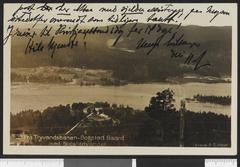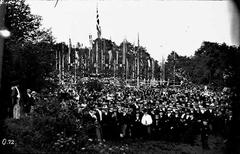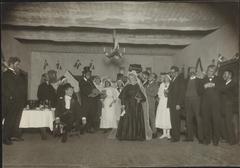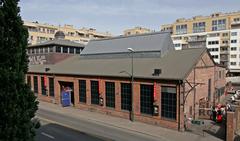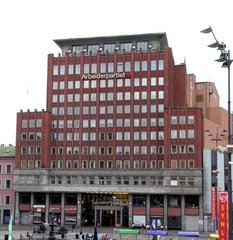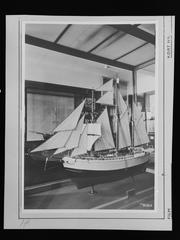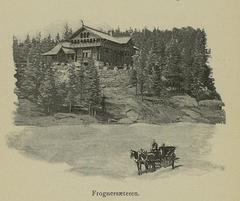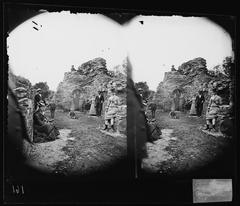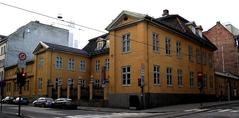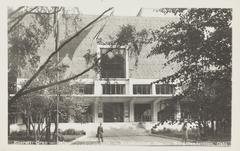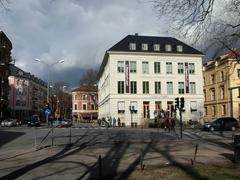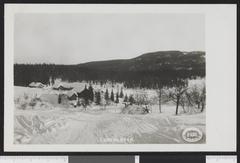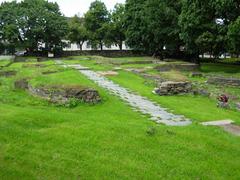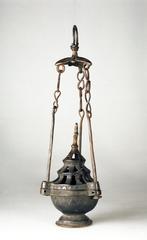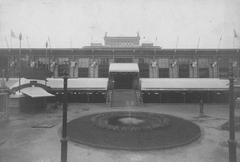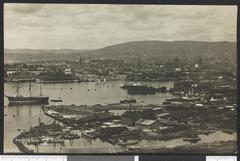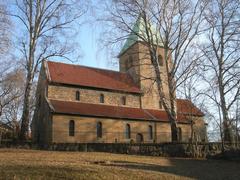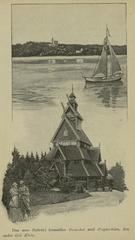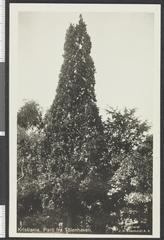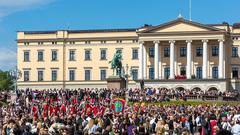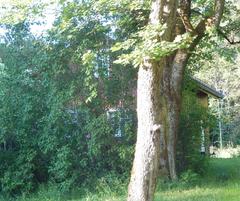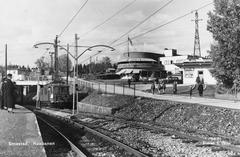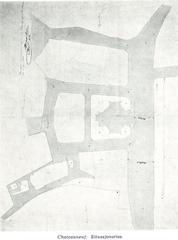MS Scandinavian Star Memorial Visiting Hours, Tickets, and Oslo Historical Sites Guide
Date: 03/07/2025
Introduction
The MS Scandinavian Star Memorial in Oslo stands as a profound tribute to the 159 lives lost in one of Scandinavia’s most devastating maritime disasters. The tragic fire aboard the ferry on April 7, 1990, which occurred en route from Oslo to Frederikshavn, had far-reaching consequences—shaping maritime safety regulations and leaving a deep imprint on Norwegian and Danish society. Centrally located along Oslo’s scenic waterfront, near Akershus Fortress and the Oslo Opera House, the memorial is both a site of remembrance and a catalyst for reflection and learning. This comprehensive guide details the history and significance of the Scandinavian Star, offers practical information for visiting the memorial, and provides cultural context and responsible tourism advice to ensure a respectful and meaningful experience (dayhist.com, Evendo, Wikipedia).
Contents
- Historical Overview
- Disaster and Aftermath
- Memorialization and Impact
- Visiting the Memorial: Hours, Accessibility, and Directions
- Design and Symbolism
- Cultural Context and Responsible Tourism
- Practical Visitor Information
- Frequently Asked Questions (FAQ)
- Summary Table
- Sources and Further Reading
Historical Overview
Origins and Construction
Built in 1971 in Nantes, France, as the MS Massalia, the vessel served as a roll-on/roll-off (RoRo) passenger ferry across European routes. Over time, changes in ownership and rising passenger demand led to several modifications, before the ship was renamed MS Scandinavian Star and refitted for overnight ferry service between Oslo and Frederikshavn in 1989 (dayhist.com).
Transition to Scandinavian Star
Upon its acquisition by Scandinavian World Cruises, the ship was modernized for the popular Oslo–Frederikshavn route. However, safety upgrades did not match the expanded facilities. Investigations later highlighted serious deficiencies, including malfunctioning alarms, inaccessible emergency exits, and insufficient crew training (dayhist.com).
Disaster and Aftermath
The 1990 Fire
On April 7, 1990, a fire—later determined to be arson—broke out on board at around 2:00 AM. The blaze quickly spread, killing 159 people, most of whom died of smoke inhalation inside their cabins due to blocked exits and failed alarms. The tragedy remains one of Europe’s deadliest maritime disasters (Springer).
Identification and Emergency Response
A massive forensic effort at the University of Oslo identified all victims within 17 days, largely through dental records. The tragedy mobilized communities in Norway and Denmark, with support networks forming rapidly despite the absence of digital communication (Springer, dayhist.com).
Regulatory Consequences
The disaster catalyzed significant reforms in maritime safety, including:
- Enhanced fire detection and suppression systems
- Improved emergency signage and accessible exits
- Mandatory crew training and regular drills
- Stricter construction standards for passenger vessels (dayhist.com)
Memorialization and Impact
Annual Commemoration and Cultural Memory
The MS Scandinavian Star tragedy is annually commemorated in Oslo and Frederikshavn. Survivors, families, and the public gather at the memorial each April 7th. The disaster remains a key topic in Scandinavian media and literature, symbolizing the necessity of vigilance and accountability.
Role in Reforms
Advocacy by survivors and families has been instrumental in ongoing improvements to maritime safety and public transparency (dayhist.com).
Visiting the MS Scandinavian Star Memorial
Location & Accessibility
- Address: 13 Akershusstranda, Oslo 0150, Norway
- Nearby Landmarks: Akershus Fortress, Oslo Opera House
- Accessibility: Wheelchair accessible; paved walkways; benches for rest (Evendo)
Directions
- By foot: 15–20 minute walk along the waterfront promenade from Oslo Opera House or Oslo Central Station
- By tram: Line 12 to Aker Brygge, then a short walk
- By bus: Bus 54 to Aker Brygge, then walk along the promenade
- By ferry: From City Hall (Rådhusbrygge 3) to Aker Brygge (Evendo)
Visiting Hours
- Open: 24 hours a day, year-round
- Admission: Free; no tickets required
- Best Times: Early mornings, late evenings, or during annual commemorations in April
Guided Tours
While no official tours focus exclusively on the memorial, it is often included in broader Oslo city walking tours. Inquire with the Oslo Visitor Centre for options (VisitOSLO).
Design and Symbolism
Unveiled in 2006, the memorial’s central bronze sculpture by Jon Torgersen depicts a mother with two children—one reaching for a dropped teddy bear—symbolizing lost innocence and familial loss. Nearby, a plaque lists the names of all 159 victims, providing a focal point for remembrance (Lokalhistoriewiki, Wikipedia, Life in Norway).
The waterfront location and minimalist design encourage quiet reflection, with the open setting reinforcing the theme of collective remembrance and resilience (Evendo).
Cultural Context and Responsible Tourism
Memorial Etiquette
- Visit with quiet respect; avoid loud conversations or disruptive behavior
- Photography is permitted but should be discreet; avoid intrusive shots, especially if others are in mourning
- Flowers and candles may be left in accordance with local customs
- Drones are prohibited due to proximity to government sites
Cultural Sensitivity
Norwegian society places value on open discussion and remembrance, but also on privacy and respectful engagement. Approach conversations about the disaster with empathy and avoid speculation regarding unresolved aspects (ctif.org, lifeinnorway.net).
Responsible “Dark Tourism”
The Scandinavian Star Memorial is an example of “dark tourism,” where visitors engage with sites of tragedy to learn and reflect. Responsible visitors should educate themselves beforehand, behave respectfully, and support local remembrance initiatives when opportunities arise.
Practical Visitor Information
- Facilities: No restrooms or cafés on-site; amenities available in Aker Brygge and Akershus Fortress
- Safety: Oslo is safe and well-patrolled; standard urban precautions apply
- Accessibility: Paved, wheelchair-accessible paths; some uneven terrain near Akershus Fortress
- Language: Most Norwegians speak English; signage is primarily in Norwegian but easily understood
- Emergency: Dial 112 for police/fire/ambulance; Oslo Visitor Centre is near Oslo Central Station
Frequently Asked Questions (FAQ)
Q: What are the visiting hours of the MS Scandinavian Star Memorial?
A: Open 24/7, year-round.
Q: Is there an entrance fee or ticket required?
A: No, the site is free and open to the public.
Q: Are guided tours available?
A: Some Oslo walking tours include the memorial. Ask local tour providers for details.
Q: Is the site accessible for visitors with disabilities?
A: Yes, with paved paths and benches for rest.
Q: What is the best time to visit?
A: Early mornings, late evenings, or during the annual commemoration on April 7.
Summary Table: Essential Visitor Information
| Feature | Details |
|---|---|
| Address | 13 Akershusstranda, Oslo 0150, Norway |
| Coordinates | 59°54’26.388” N 10°44’6.775” E |
| Accessibility | 24/7 access, free, wheelchair accessible |
| Closest Transport | Rådhusbrygge (tram/bus), Oslo Central Station (15 min walk) |
| Facilities | None on-site; available nearby |
| Nearby Attractions | Akershus Fortress, Aker Brygge, Nobel Peace Center, Oslo Opera House |
| Emergency Number | 112 |
| Official Info | Visit Norway, Wikipedia |
Sources and Further Reading
- dayhist.com
- Evendo
- Tripomatic
- CTIF: Norwegian parliament confirms no foul play in the 1990 Scandinavian Star ship fire
- Life in Norway
- Wikipedia
- Lokalhistoriewiki
- VisitOSLO
- Matias Travel
- iTravelForTheStars
- Nomadic Matt: Oslo Travel Guide
- Springer

